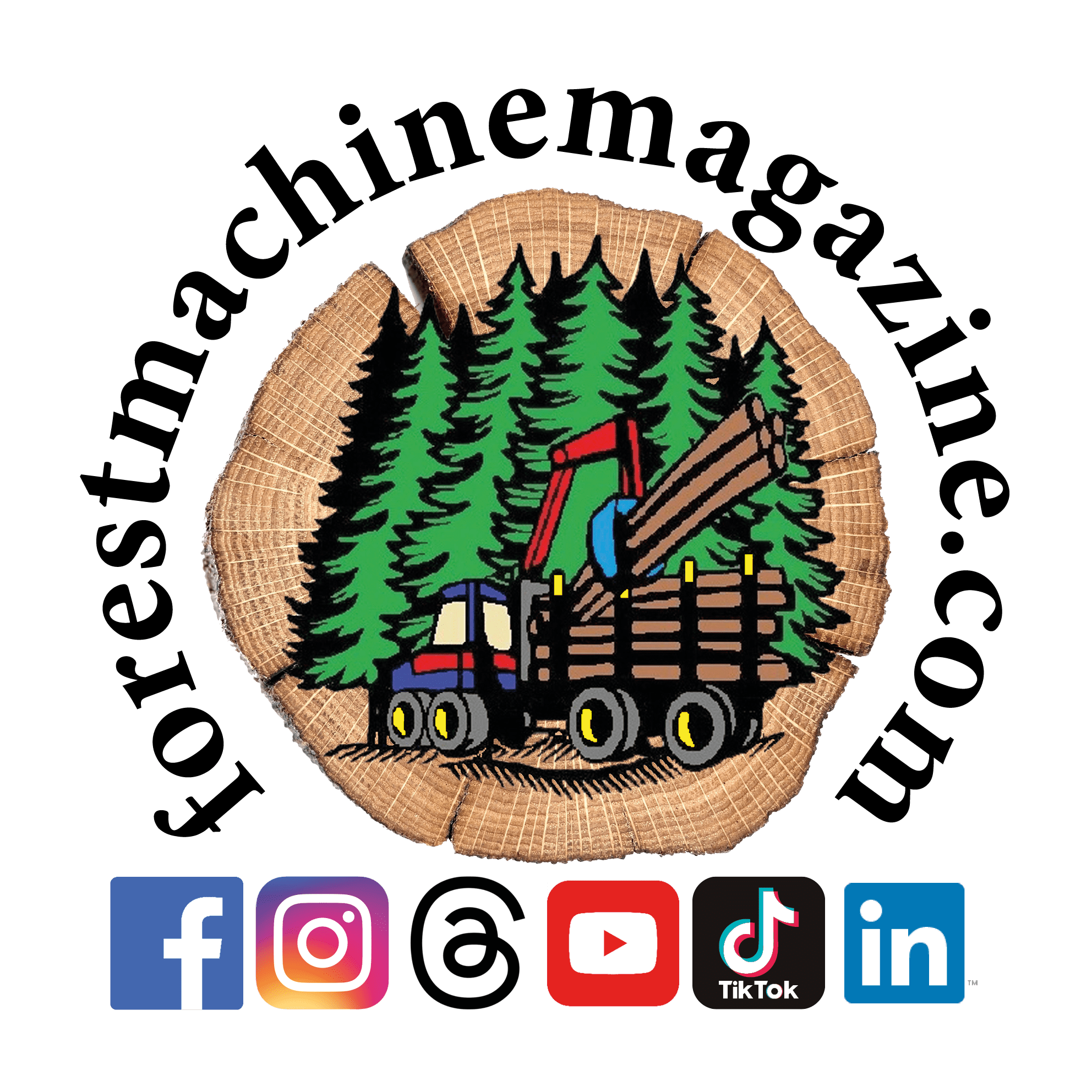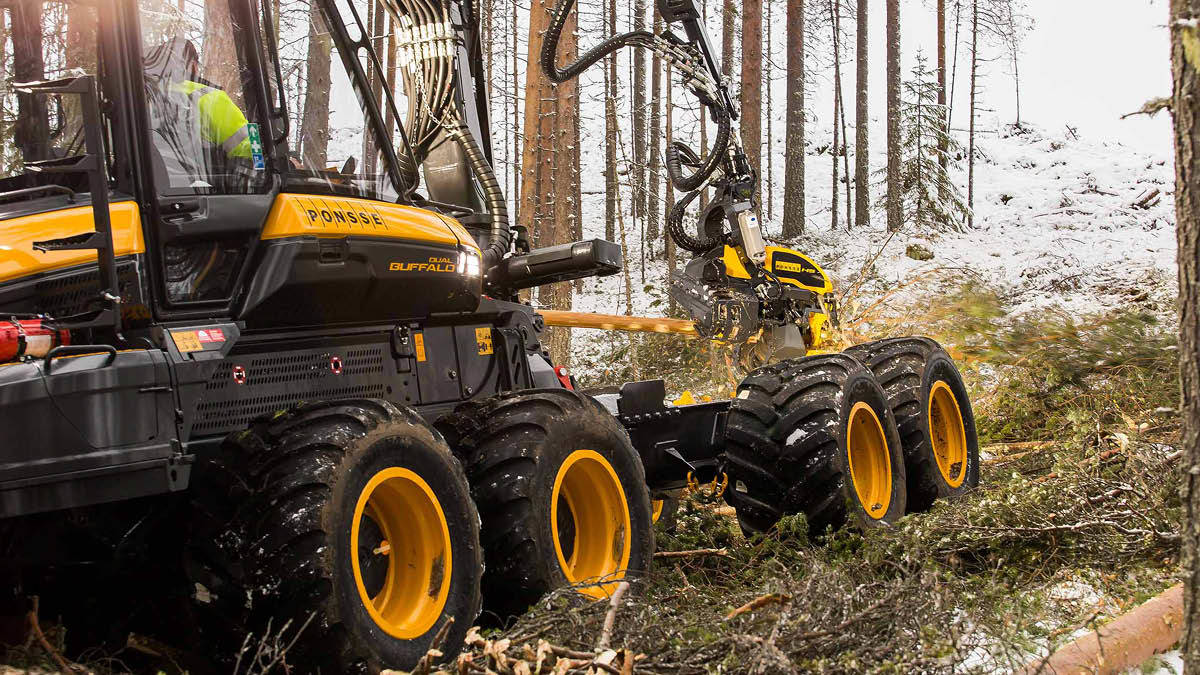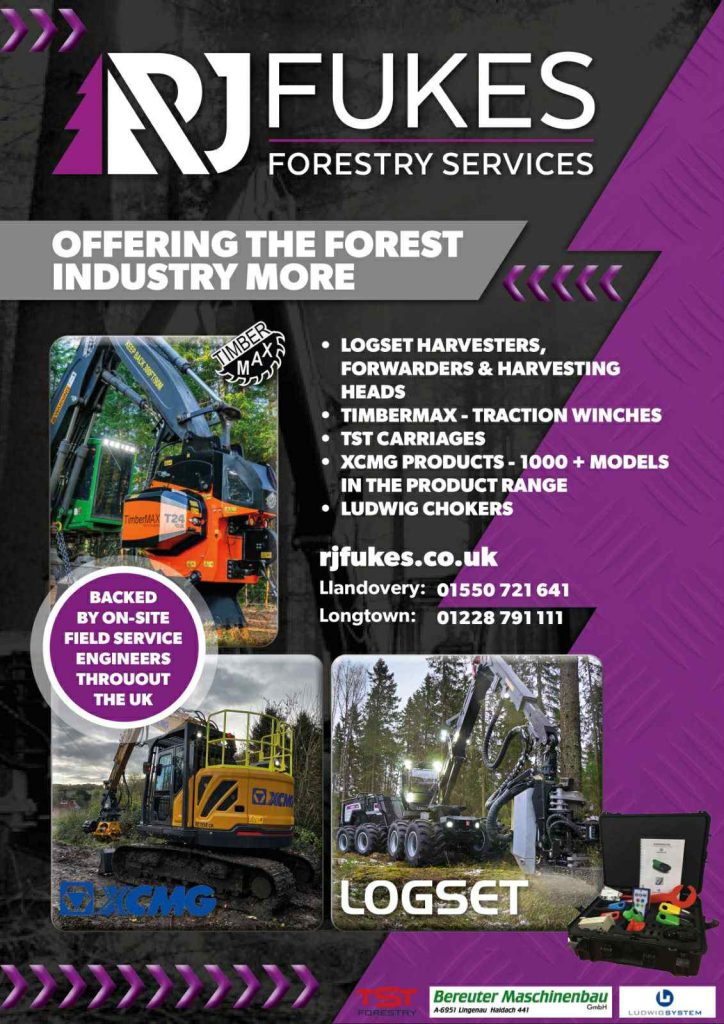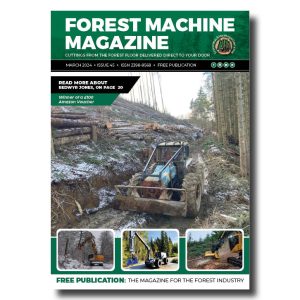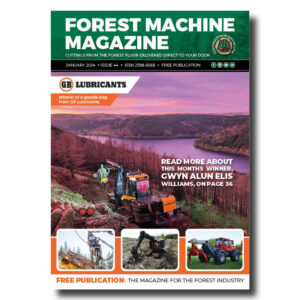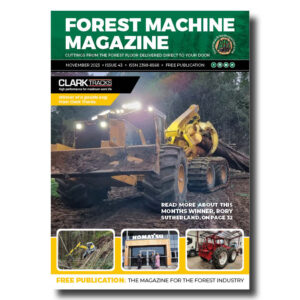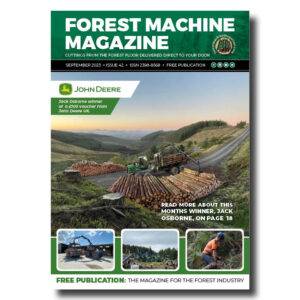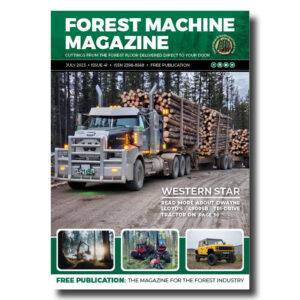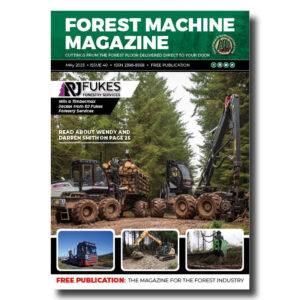Single-machine system for continuous cover forestry – this is what forest companies and machine manufacturers think
What does the future of the single-machine system look like? Forest companies and machine manufacturers share their perspectives as continuous cover forestry increases in Sweden. Photo Ponsse Oy
Continuous cover forestry risks increasing harvesting costs
Continuous cover forestry, or rather continuous cover forest management systems, is becoming increasingly common among the Church of Sweden, state-owned Sveaskog and, above all, among private forest owners. Continuous cover forestry usually leads to felling with low timber removals per felling occasion. Moving a machine between felling areas costs the same amount regardless of the volume felled. Today’s two-machine system consists of harvesters and forwarders, which means that (at least) two machines must be moved when changing the field. This can lead to higher harvesting costs per harvested timber volume.

-
That’s a remarkable amount of work hours for a single machine, the Norcar 600 owned by Erkki Rinne is taken well care of, it even has the original Diesel engine.
-
Kieran Anders is a forestry contractor working in the lake district. His work involves hand cutting and extracting timber using a skidder and tractor-trailer forwarder.
-
It is not possible to eliminate chain shot, but there are simple steps that can be taken to reduce the risk.
-
Arwel takes great pride in the fact that the mill has no waste whatsoever, “the peelings are used for children’s playgrounds, gardens and for farm animals in barns in the winter and the sawdust has multiple uses in gardens and farms as well.
-
Timber hauliers need to encourage young blood in, and also look after the hauliers we have, we need make the sector a safe and positive place to work.
FIND US ON
Single-machine system – new-old solution?
Single-machine systems are an alternative to the two-machine system. This system means that a single machine both harvests and forwards the timber. You can reduce moving costs and increase the technical utilization rate by moving just one machine instead of two. We divide single-machine systems into direct-loading (hereinafter driven) and non-direct-loading machines (hereinafter combi machines). The series-produced Ponsse Dual machines and Valmet Combi are examples of single-machine systems. Although a number of studies have shown cost benefits at low yield levels per hectare for single-machine systems, the buying interest among forest machine owners has been weak and no sustained commercial breakthrough has taken place. However, there are currently single-machine systems available on the Swedish market, for example from Malwa and Vimek, but these machines are too small to handle large trees (>1 m3), which is a common requirement in continuous cover forestry. In addition, Nisula sells harvester heads equipped with grapple arms, for example. These, so-called combination heads, can cut large trees, but they are clumsy, especially when unloading multi-range loads.
Survey of the view of single-machine systems
In his degree project, forester Sebastian Boson interviewed machine manufacturers and Swedish forest companies with the aim of mapping their views on the possible role of the single-machine system in Swedish forestry, especially if continuous cover forest management systems would become more common in Sweden. Based on the interview material, it was also estimated how many new single-machine systems (either drivers or combi machines) the forest companies can be expected to employ in their felling annually, and what is required before the machine manufacturers are ready to launch single-machine systems commercially.
The respondents include the forest companies: Holmen, Mellanskog, Norra Skog, SCA, Stora Enso, Sveaskog and Södra; and the machine manufacturers: Ecolog, HSM, John Deere Forestry, Komatsu Forest, Logset, Malwa Forest, Ponsse, Rottne, Sampo Rosenlew and Vimek. The entire master’s thesis is freely available in Epsilon, SLU’s archive for student projects. In this knowledge article, we summarize and discuss the most important results of the degree project.
The perceived strengths and weaknesses of the single-machine system in Swedish forestry
Fewer moves
Almost all respondents considered that halving the number of trailer moves was one of the biggest strengths of single-machine systems compared to two-machine systems. However, two of the seven forest companies stated that the relocation cost only accounts for a small proportion of the total harvesting cost. However, the real costs of moving machinery are significantly higher than the direct removal or trailer costs alone. The start-up and completion of a felling tract involves a lot of set-up time (non-productive work), which in turn reduces the technical utilization rate and thus the profitability of the machine contractors.
Land impact
On the other hand, respondents highlighted that a single-machine system would likely become a heavy machine, increasing the risk of ground damage, especially in the future as climate change reduces off-road load-bearing capacity. Here we assume that they specifically meant work with drivers, which load the timber directly onto the load carrier during the felling work. The work with a combi machine is no different from forwarder and harvester work – first the area is felled and then the wood is shoveled to the landfill. We agree with the respondents when it comes to a direct loading driver. A tilt and rotatable load carrier makes the driver heavier
than harvesters or forwarders in the same size class. In addition, a tilt and rotatable load carrier raises the machine’s center of gravity, which can further deteriorate the position. However, the weight of the combi machine, both in harvester and forwarder version, is comparable to harvesters and forwarders in the same size class. In addition, we believe that the possible future system cannot be a pure final felling machine, but its size must be adapted so that the machine is suitable also for final thinning and continuous cover forestry. However, we share the concern about soil damage. Proper raking protects the ground effectively, but at low timber removals (m3/ha), the availability of rice may be limited. Extensive root damage could lead to rot and the stand having to be felled, which is particularly regrettable in continuous cover forestry.
Logistics and planning of the harvesting work
Some respondents mentioned easier planning, simpler logistics and a balance between felling and forwarding as advantages of a single-machine system. On the other hand, some respondents saw a risk of lower technical utilization rates for single-machine systems compared to two-machine systems.
Complement to the two-machine system
Both machine manufacturers and forestry companies see a potential for single-machine systems, provided that the right conditions are met. Both also emphasized that single-machine systems are competitive in the right type of areas, small to medium-sized objects with a generally lower yield. Single-machine systems are pointed out as more flexible than two-machine systems, especially in alternative and clear-cut forestry methods, which both groups believe will increase in the future. Both machine manufacturers and forestry companies believed that single-machine systems should complement rather than compete with the two-machine system.
We believe that regional entrepreneurship can contribute to a satisfactory supply of suitable areas within a reasonable distance. That is, contractors can work for several clients. Otherwise, the moving distances (and standstills) can increase too much, leading to a decrease in the technical utilisation rate.

Market analysis
The situation now: Demand versus the desire to launch a single-machine system
A market analysis was also included in Boson’s degree project. According to this survey, the demand for a single-machine system is about 35 new machines annually among the responding forest companies. If these companies are assumed to account for 80-90% of Sweden’s annual felling, Sweden’s total market for single-machine systems can be estimated at about 40 machines per year. A geographical difference was also noted regarding the interest in single-machine systems. The forest companies operating in the southern half of the country had a greater need for a single-machine system, while the interest was significantly weaker among the companies operating in the northern half of the country. This reflects reality, as northern Sweden has larger middle areas compared to southern Sweden.
The threshold for starting a series production of single-machine systems varied significantly between the machine manufacturers. Two of the machine manufacturers believed that as many as 5–10 single-machine systems sold per year would arouse interest in serial production of these systems, while other manufacturers set the corresponding figure of 15–25 or even just over 100 machines per year. Most machine manufacturers judged the existing market to be too small to start manufacturing single-machine systems, but they are ready to consider the situation in the future if there is a clear and sufficiently high demand. Interestingly, the estimated annual market of a total of 40 machines exceeds most of the stated thresholds. In addition, it can generally be stated that the larger manufacturers require a more extensive market than smaller players to consider series production.
Should it be a driver or a combi machine?
Machine manufacturers are more likely to further develop existing machines than to invest in new concepts. If you still have to choose between a driver and a combi machine, the manufacturers’ answers were somewhat divided, but most preferred a combi machine. We believe that this reflects the technical and structural similarity of the combi machine to today’s forwarders and harvesters. Forest companies, on the other hand, preferred drivers to combi machines.
Almost half of all respondents felt that single-machine systems need more automation to become more competitive in the market. We assume that the respondents specifically meant a driver. There is a fully functional semi-automated driver in Skogforsk’s machine simulator, Troëdsson Forest Technology Lab. The machine’s control principles and functionality have been tested in a simulator environment by professional operators.
The future of single-machine systems
Machine manufacturers and forestry companies agreed that the demand for the single-machine system must be proven before series production can begin. A number of respondents also felt that forest companies must bear the initial risk and buy the first production series.
Although machine manufacturers do not dare to invest in serial production of single-machine systems at the moment, the size of the Swedish market is likely to grow in the coming years as continuous cover forestry becomes more common. Moreover, this investigation covered only the Swedish market. There is probably a demand for single-machine systems in the rest of the Nordic region and also in other countries. For example, a forest company respondent thought that single-machine systems could be well suited in the Baltic countries. Continuous cover forestry is standard in Central Europe, where motorised manual felling is still very common. Sooner or later, felling work will probably also be mechanized in Central Europe, which may open up additional markets for single-machine systems in the future.
Sign up for our free monthly newsletter here
Contact forestmachinemagazine@mail.com to get your products and services seen on the world’s largest professional forestry online news network.
#homeoflogging #writtenbyloggersforloggers #loggingallovertheworld
Written by loggers for loggers and dedicated solely to the equipment used in forestry operations.
